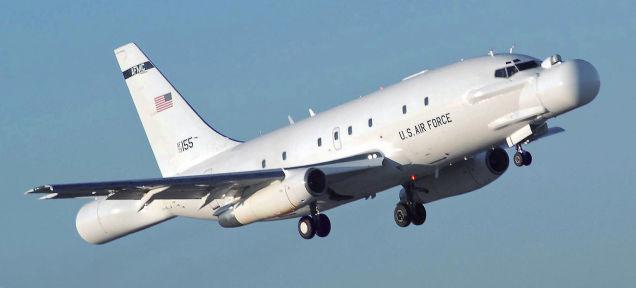Raytheon's 155mm M982 Excalibur extended-range guided artillery shell is being shrunk down to fit into the Mark 45 five inch deck guns that are deployed aboard the Navy's Cruisers and Destroyers. This miniaturized sea-going Excalibur, known as the N5, could triple the range of current five inch shells and offer pinpoint 'danger close' fire support like never before.
The Excalibur round really is a modern marvel. It can be hurtled out of a howitzer barrel under immense G loads, then once it reaches the top of its trajectory, it begins its guided glide path via pop-out canard control fins, which greatly enhances the shell's range over a standard 155mm round. Because it is guided, it can also hit nearly any target at near vertical angles, allowing it to strike the enemy in the shadow of steep mountains or in urban environments that traditional ballistic artillery could not engage safely.
The outer edge of the current Excalibur's range is said to be about 25 miles and
. Guiding itself to its target using a sensitive and greatly miniaturized
, Excalibur is so accurate that it has been cleared to be employed against targets just 500 feet from friendly forces.
Introduced onto the battlefield in Iraq in 2007, the rounds gave Howitzer units so much added flexibility due to the Excalibur's increased range, non-ballistic trajectory and almost perfect accuracy that the Army immediately upped the round's production from 18 units a month to 150. Since then, thousands more M982 shells have been built and nearly a thousand of them have been fired in combat.
Today, the updated version of Excalibur costs about $50k a shell and the price has steadily decreased over time, even though the project has been a victim of the DoD's spastic spending practices. Considering that Excalibur gives standard artillery units a ring of 25 miles around them in which they can deliver an attack with the same precision as munition dropped or fired from combat aircraft, $50k a round is really not such a bad deal. Especially when you consider that using a fixed-wing aircraft to deliver a similar effect costs a minimum of about $20k an hour.
It seems everything is relative in the world of
and their five digit or greater price tags.
In a similar fashion to how the Excalibur gave Army and Marine artillery units a massive upgrade in range, accuracy and tactical flexibility, Raytheon is looking to do the same with the Navy's prolific five inch Mk45 deck gun. According to the manufacturer, with a smaller diameter non-spinning base and a smaller warhead, the Mk45's current range using standard shells, about 13 miles (the Mk45 mod 4, with its longer barrel offers a range of about 21 miles), can be tripled. This would give Excalibur N5 paired with the Mk45 deck gun a range of almost 40 miles, and possibly 60 miles when fired from the Mark 45 Mod 4 gun equipped ships.
This means that a cruiser or destroyer could provide precision fires, even against targets located in dense urban areas, well over the horizon in support of shoreline operations, or deep into the enemy's territory if operating closer to shore in lower threat environments. Such a capability could be very useful when it comes to the concept of a classic Marine beach landing, but even more useful when used in support
Time sensitive strike, the ability to hit a target within about an hours time is something the DoD is lusting for in the
, but for places like the Horn of Africa, a single destroyer could sit off the coast of major population centers and wait for commands to strike targets of opportunity with Excalibur N5 shells in mere minutes.
During the Libyan conflict, America fired off well over 150 Tomahawk Cruise Missiles, each costing over a million dollars. Many of the Tomahawks' targets were based along Libya's shoreline, such as SAM sites and air defense radars. These could have been taken out by Navy ships 50 miles off shore at $50k a pop using the ship's main gun and long-range precision projectiles if they were available, not to mention being able to hit smaller targets in dense areas that the Tomahawk's 1,000 pound class warhead was simply too destructive for.
Raytheon is already working on a laser guided version of the Excalibur which will be able to hit moving targets designated by troops on the ground or by unmanned or manned aircraft overhead. This opens up a whole new potential for naval fire support. The idea that a cruiser operating some fifty miles out to sea, having the ability to take out a single vehicle in a convoy or a small group of fighters walking down a street, with very little chance of unintended casualties, is game changing. Paired with unmanned aircraft, such as the Navy's MQ-8 Fire Scout, such a concept would allow for a ship to literally provide fire support for friendly forces while 'on the run,' not to mention taking out mobile high value targets in mere minutes after their initial detection.
The Excalibur N5 could also be utilized to a more lethal degree in roles that the Mark 45 gun system already fulfills, such as anti-air and anti-surface warfare. Eventually, the rounds could even be fitted with a millimeter wave radar or infrared seekers allowing for large barrages to be launched at small boat swarms long before they get within visual distance of the ship itself.
The reality is that the Navy has kicked around the five inch guided projectile idea for decades. Raytheon was supposed to supply basically the same thing as its Excalibur N5 to satisfy the Extended Range Guided Munition (ERGM) program that floundered for nearly a decade and a half, finally being cancelled in 2008. This was probably near-sighted in retrospect as the technology was just beginning to prove itself as a mature and reliable on the battlefield by the time ERGM was cut.






